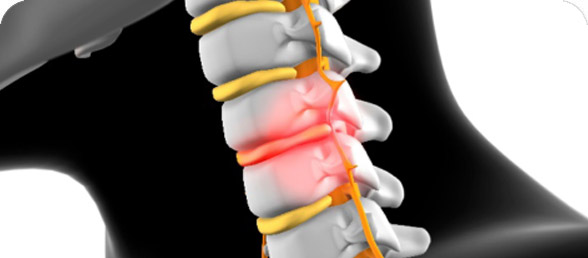Most flu vaccines are trivalent (or contain three viruses e.g. two Type A and a Type B) or quadrivalent (contain four viruses and usually two of each type).

As we are in the middle of winter it is always topical to talk about flu and the decision to have the flu vaccine. We are seeing a steady influx of patients who have eventually recovered from flu over the last few weeks and even one or two who had been to A&E.
Latest government statistics from last week demonstrate that seasonal flu figures are beginning to peak. These figures are comprised specifically of GP consultations with flu-like illnesses (19.2 per 100,000 people) and intensive care admission rates (0.54 per 100,000). Richard Pebody, Head of Flu at Public Health England, comments ‘we are continuing to see flu circulate, with early signs that activity is peaking’. But what exactly is the flu virus and what is the nature of the beast?
Different Types of Flu Virus are Accounted for in The Flu Vaccine
In general, the two most significant types of flu virus we need to worry about are Influenza A and B (there is Type C but this is less relevant). Type A in particularly is often responsible for the seasonal epidemics that we experience in the UK and the global pandemics we have seen in the past. This is of course a key component in flu vaccines.
Type A viruses can be broken into subtypes based on their antigens. Antigens are surface markers on the surface of cell membranes that make each type of virus distinct. Influenza viruses have two types of cell markers called HA (which stands for hemagglutinin) and another called NA (neuraminidase). Among the Type A viruses that infect humans, three major subtypes of hemagglutinins (H1, H2, and H3) and two subtypes of neuraminidases (N1 and N2) have been identified. As far as the virus is concerned the job of the hemagglutinin surface antigen is to bind to our respiratory epithelial cell surfaces. This interaction is necessary for the initiation of infection. After the virus has replicated neuraminidase allows the release of the new virions and further replication.
Flu Vaccines this year are well matched Subtypes of Type A Influenza
Type A causes most of the virulent infections as it has the capacity to mutate quickly and can also be passed between different species. This causes the virus to mutate rapidly and to undergo what we call ‘antigenic drift’. It will therefore display different surface antigens on its cell membrane. This means the virus will essentially look different to our immune system and the antibodies that we made the last time we had flu no longer work (hence a requirement for flu vaccines).
Type B almost exclusively infects humans and is less common than A and mutates at much slower rate. Because we essentially act as the main natural host for B, pandemics generally do not occur for this type. In Type B antigenic drifts only occur in the hemagglutinin antigen and it is typically separated into two distinct genetic lineages called Yamagata and Victoria and, unlike Type A, it is not classified into subtypes. Some of the subtypes of Type A have caused the largest number of known human deaths. These subtypes are named after their surface antigen characterisation and you may recognise some of the names.
-
H1N1, which caused Spanish Flu in 1918 and Swine Flu in 2009
-
H2N2, which caused Asian Flu in 1957
-
H3N2, which caused Hong Kong Flu in 1968
-
H5N1, which caused Bird Flu in 2004
The main circulating strain this winter is a type A virus called H1N1pdm09 which is essentially swine flu first seen in Mexico in 2009. The good news is this is well matched to the strains in this year’s flu vaccine and many of us have some level of immunity as it has been prevalent in the last few years.
History of the Flu Virus and Outbreaks
There is no doubt that viruses have been around for thousands of years. Identical or closely related viruses have been isolated from many warm-blooded vertebrates ranging from turkeys, cats, ducks, horses, pigs and geese. It is highly likely that we acquired flu when domestication of these animals began as the first early settlements developed and implemented more intensive farming practices.
The first actual documented pandemic occurred in 1580 which was reported in Northern Africa and Italy. There have been others since, such as the pandemic of 1781-82 which was especially widespread and dramatic. This started in China and spread westwards affecting British occupied India, North Africa and even North America. It was somewhat limited as it could only travel as fast as the transportation networks of the day would allow, which was probably a saving grace. This is in clear contrast to the ‘Spanish’ influenza outbreak of 1918-1919 as allied troop movements disseminated the virus throughout each and every corner of the globe. This really does serve as a wake-up call with the advent of modern-day air travel, globalisation and fast and efficient travel networks.
Scientifically the flu virus was not isolated and identified until 1933. This was done by a group of scientists led by Patrick Laidlow at the National Institute of Medical Research in London. The first vaccine was subsequently developed in 1944 by Thomas Francis Jr and his research team, with the support of the U.S. Army. Clearly this was motivated by the experience of Spanish flu years earlier. This was with good reason as Spanish flu caused the deaths of at least 50 million people worldwide and in the U.S. alone 675,00 people died in just eight months between September 1918 and April 1919. Rough estimates suggest that between 20-40% of world were infected with either mild or fatal responses. The public health implications of this outbreak are vast, far-reaching and worrying.
Spanish Flu Teaches us a Dangerous Lesson
What is very interesting is that in 2005 a study was published in the Journal of Emerging Infectious Diseases by Taubenberger and Morens called ‘1918 Influenza: The Mother of All Pandemics’. This research sequenced the entire genome of the Spanish flu from 1918 having obtained tissue samples from a body buried in Alaskan permafrost. Taubenberger and Morens found that most of the genes in the virus were derived directly from a bird flu influenza virus (H1N1). This discovery raises the terrifying possibility that, in the future, some other avian influenza virus – like the H5N1 bird flu or H7N9 flu (currently causing sporadic human infections in China) – might suddenly acquire the ability to trigger a similarly devastating pandemic.
What is in the Flu Vaccine?
This is why it is important to have the flu vaccine. Most flu vaccines are trivalent (or contain three viruses e.g. two Type A and a Type B) or quadrivalent (contain four viruses and usually two of each type). Influenza vaccine uptake in 2017 to 2018 in England was higher than the 2016 to 2017 season across all of the target groups in particular in the 65+ year olds (72.6%) and in healthcare workers (68.7%).






